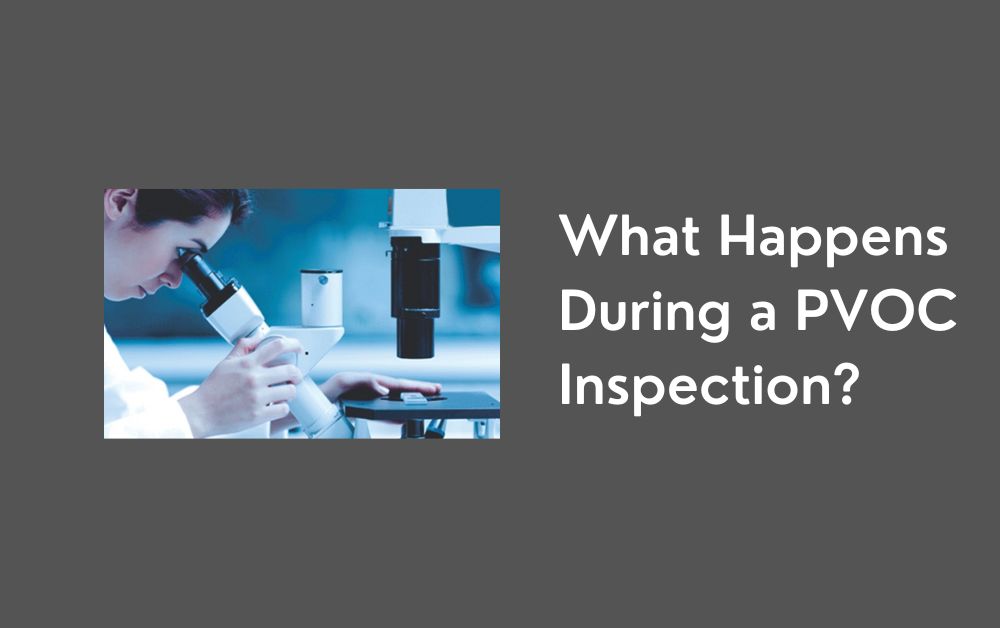Pre-Verification of Conformity (PVOC) inspections are crucial for businesses aiming to export products to certain international markets. These inspections ensure that goods meet the quality, safety, and performance standards of the destination country, thereby safeguarding the interests of both manufacturers and consumers. Understanding the PVOC inspection process can help exporters prepare more effectively and avoid potential delays or complications. This blog explores what happens during a PVOC inspection and why it’s essential.
Understanding PVOC Inspection
The Purpose of PVOC Inspections
PVOC inspections are designed to ensure that products exported to various countries comply with the relevant standards and regulations of those countries. This process not only helps in preventing substandard goods from entering the market but also protects public health and safety.
Countries Requiring PVOC
Several countries, particularly in Africa and the Middle East, require a PVOC certificate before goods can be imported. Countries such as Kenya, Saudi Arabia, and Uganda have stringent requirements to ensure that all imported products meet their national standards.
The PVOC Inspection Process
Registration and Documentation
Initial Steps
Before a PVOC inspection can occur, exporters must register with an accredited inspection agency. This agency will handle the verification process and ensure that all the necessary documentation is prepared. This documentation often includes product details, country of origin, and compliance certificates.
Submission of Documents
Exporters must submit all required documentation to the inspection agency. These documents typically include technical datasheets, quality certificates, and compliance declarations. The agency reviews these documents to ensure they meet the destination country’s regulatory requirements.
Physical Inspection
Scheduling and Planning
Once the documentation is verified, a physical inspection of the goods is scheduled. The inspection agency coordinates with the exporter to arrange a suitable time and location for the inspection, usually at the manufacturer’s warehouse or at the port of export.
Inspection Procedure
During the physical inspection, inspectors check the quality, quantity, and packaging of the products against the submitted documents and the destination country’s standards. They look for any defects, damage, or non-conformities that could affect the product’s acceptance in the importing country.
Sampling and Testing
Sample Collection
In some cases, samples of the products may be collected during the inspection for further testing. This is particularly common for products that involve health and safety considerations, such as electrical appliances, chemicals, and food products.
Laboratory Testing
Collected samples are sent to accredited laboratories to undergo various tests. These tests might include safety performance tests, quality checks, and compliance tests with international or specific national standards.
Issuance of the PVOC Certificate
Approval and Certification
If the products meet all the necessary criteria, the inspection agency issues a PVOC certificate. This certificate is a crucial document that must accompany the exported goods, proving they have passed all required inspections and tests.
Non-Conformity and Rejection
If discrepancies or non-conformities are found during the inspection or testing phases, the products may be rejected, and a certificate will not be issued until issues are rectified. In such cases, exporters need to address the identified problems and arrange for a re-inspection.
Why PVOC Inspections Are Crucial
Market Access
PVOC certificates are often mandatory for accessing certain international markets. Without this certification, goods may be held at customs, refused entry, or subjected to penalties.
Reputation and Compliance
Adhering to PVOC requirements demonstrates a commitment to quality and compliance, enhancing the exporter’s reputation in international markets. It shows that the exporter is serious about meeting market standards and respecting consumer safety.
Conclusion
A PVOC inspection is a thorough process that involves multiple steps—from initial documentation and physical checks to sampling and final certification. Understanding what happens during these inspections helps exporters ensure their products meet the required international standards, facilitating smoother market entry and fostering trust with global consumers. By embracing the PVOC process, exporters can not only avoid compliance issues but also strengthen their market presence abroad.
Note:- For more articles visit on theincblogs.

